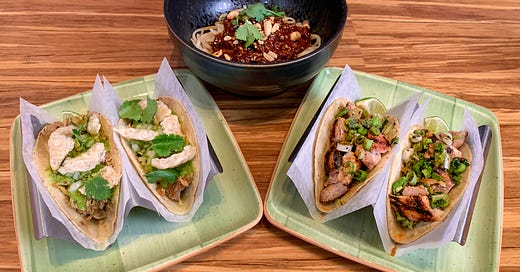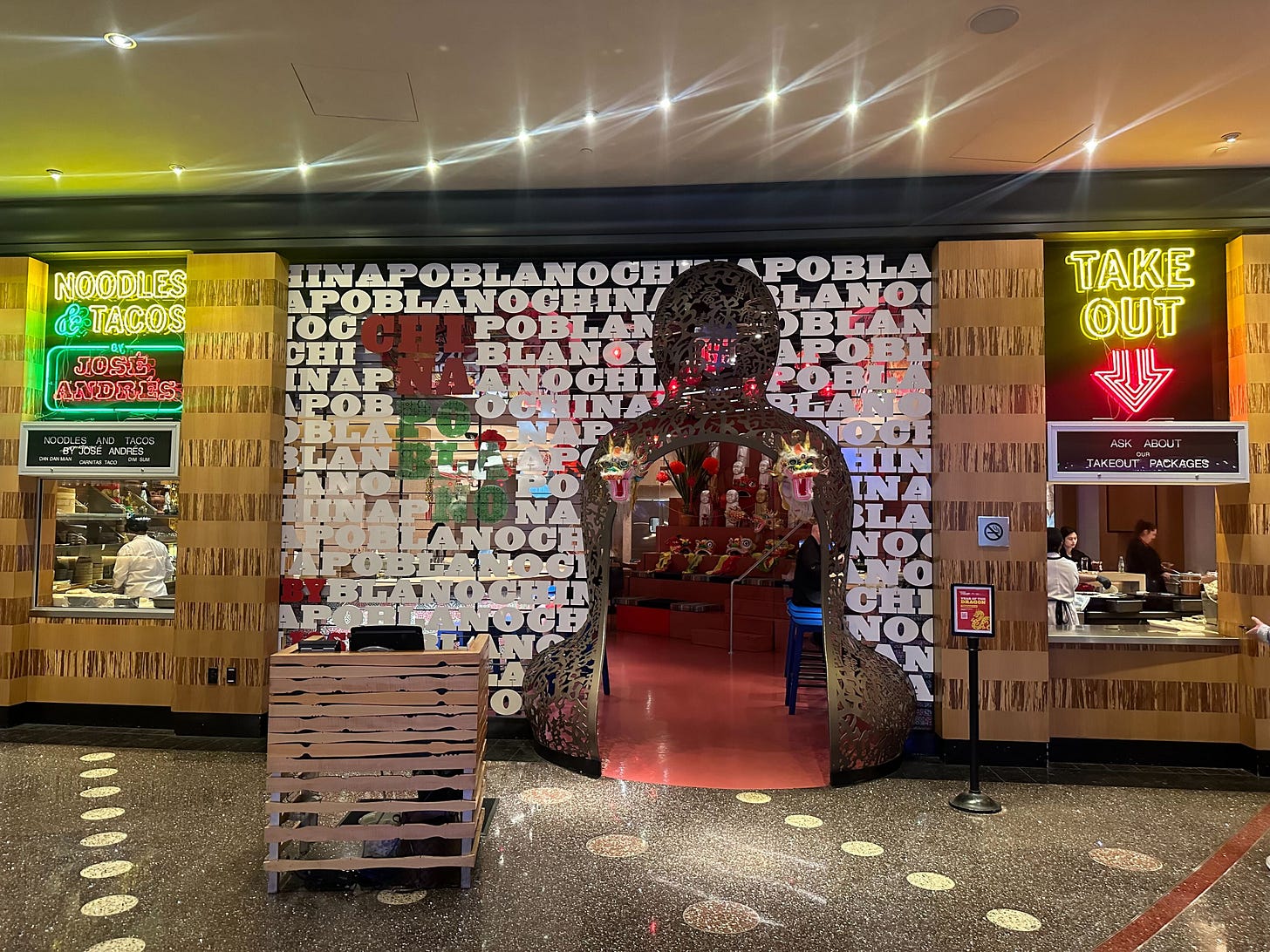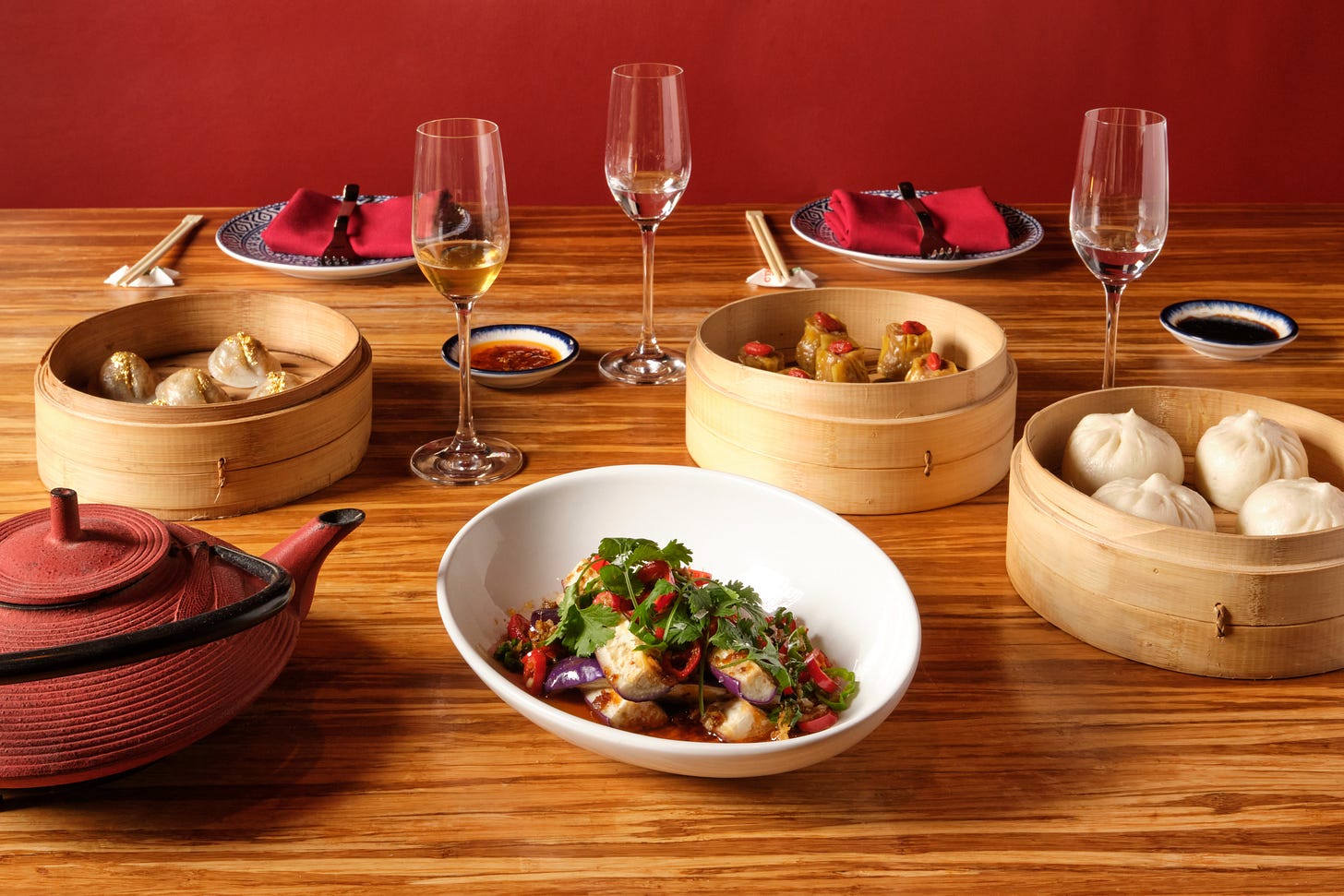Mexico and China, together forever
At my Vegas restaurant China Poblano, we've brought together two distinct cuisines
A few weeks ago, I shared with you a recipe for Korean-Chinese chicken wings, Gan Pung Ji, ahead of Lunar New Year. Did any of you get a chance to make it? What did you think?
I realize I’ve never really told you about the restaurant that serves them, called China Poblano. It’s been open in Las Vegas since 2011, and it’s one of my favorite restaurants ever…some of my team tells me that it’s actually their favorite restaurant in the entire company (don’t tell that to the team at Jaleo!!) The menu is split into two: noodles and dim sum from China, tacos and ceviches from Mexico.
You might think, José, you are mixing Chinese and Mexican food? That doesn’t make any sense! But I’ll tell you a story and maybe you’ll change your mind.
There is a city in Mexico called Mexicali, right on the border with California (across from Calexico). At the end of the 19th century and the beginning of the 20th, thousands of Chinese immigrants started moving to Mexicali—some of them came directly from China to work on a large irrigation project in the area, though many of them came south from the United States. The US had brought thousands of Chinese workers to support infrastructure projects like the cross-country railroads, but rising xenophobia and anti-immigrant feelings—which sadly we still know all too well today—meant that many Chinese people were forced to leave the country. Over the course of a few decades, the city’s Chinese population grew larger than its Mexican population, leaving a long-lasting mark on Mexicali’s culture…and of course, cuisine!
Today, there is a neighborhood of Mexicali called La Chinesca, which is the Chinatown of Mexicali. There you can find Chinese cuisine alongside some of the traditional dishes of Mexico—just like at China Poblano. But you should know it’s not fusion…we have Chinese dishes and Mexican dishes. Just one taco—the Viva China, with crispy beef tendon, Szechuan-soy sauce, and raw oyster—is a mix of the two. Other than that, it’s really amazing Chinese dishes alongside really amazing Mexican ones, which work beautifully on the table together.
The story doesn’t end with Mexicali…I have a more personal story as well as well. One of my oldest friends in the US is Ambassador Jorge Guajardo, a Mexican national from Monterrey who went to Georgetown. I met him more than 30 years ago—he was actually the guy that picked me up in the airport when I landed in DC for the very first time (remember my journey to Jaleo?).
Well…he ended up being the Mexican ambassador in China, right when I was thinking about the concept for China Poblano. How many times in your life does your best friend end up becoming the Mexican ambassador in China at the same time that you’re thinking about doing a Chinese-Mexican restaurant?
It's like I couldn't organize it better if I was writing the script of a movie!
So I was able to go to China to do research, cooking in the kitchen of the Mexican ambassador to China with both Mexican and Chinese cooks, and I ended up doing some research trips both around China and around Mexico. What an amazing opportunity!
And of course you can taste the results of all of that research, all of those stories! I love visiting Las Vegas just so I can see my team at China Poblano, and to taste through the menu.
By the way…next week I’ll be telling you about agave spirits—tequila and mezcal—so you should know that we are doing a super amazing mezcal and bao (steamed bun) pairing in March!
So friends, maybe you’ll be passing through Vegas sometime soon? Give China Poblano a visit!








Ironically, outside of the relatively short Mexican poblano season, all the "poblanos" in Mexico (and California where I live) are Chinese imports and arguably not poblanos at all! One of the many reasons I grow my own (from Kitazawa seeds of course). I actually thought for a minute these "China Poblanos" were going to be the subject of this article...
Sounds delicious 😋